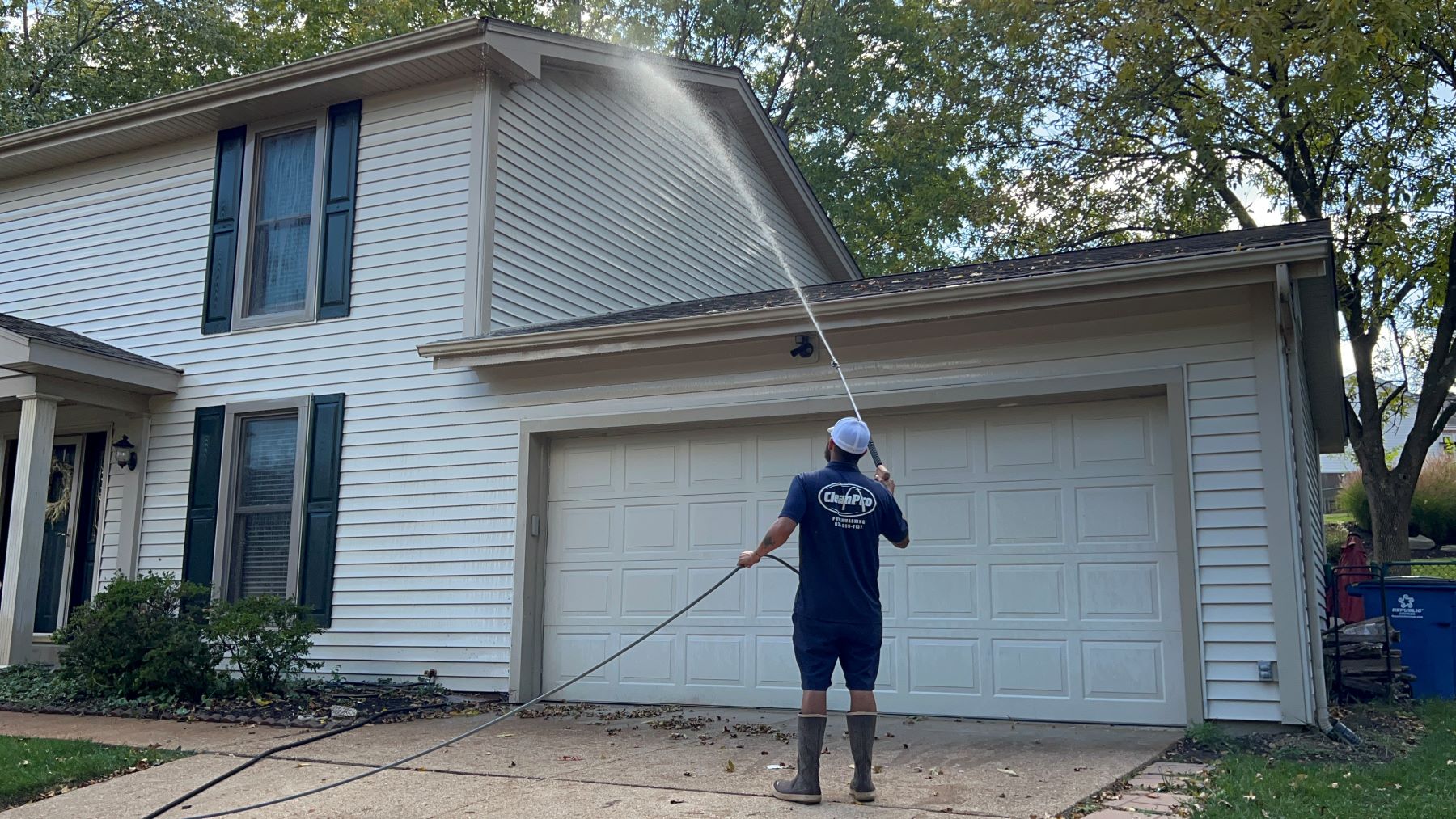
As a power washing professional, you’re likely familiar with the satisfying power of blasting away grime with high-pressure water. But not every surface can withstand that level of force. Enter: soft washing — the gentler, chemical-assisted sibling of pressure washing. 🌿💦
Soft washing has become a popular add-on (or even replacement) for traditional pressure washing in many parts of the country. But is it right for your business? And what do homeowners and property managers need to know before choosing it?
In this article, we’ll walk through the advantages and disadvantages of soft washing, so you can make an informed decision — whether you’re a pro thinking of expanding your services or a customer trying to figure out the best cleaning solution for your property. 🧽🏠
💡 What Is Soft Washing?
Soft washing uses low-pressure water combined with specialized cleaning solutions to remove dirt, mold, algae, and mildew. Instead of relying on brute force, soft washing relies on chemical action to break down organic matter.
While power washing operates at 2,000–4,000 PSI, soft washing typically stays under 500 PSI — similar to a garden hose with more precision. 🔍💧
Common soft washing targets:
- Roofs (especially shingles)
- Painted wood siding
- Stucco
- Screens and enclosures
- Fences and decks
- Outdoor furniture
It’s all about cleaning without damaging delicate surfaces.
✅ Pros of Offering Soft Washing Services
1. 🌿 Safe for Delicate Surfaces
Many materials — like asphalt shingles, painted wood, and older brick — can be easily damaged by high-pressure washing. Soft washing is much safer, reducing the risk of:
- Cracking or chipping
- Water intrusion
- Paint peeling
- Voiding roof warranties
If your clients are homeowners with older homes or delicate surfaces, soft washing is a must-have offering. 🏡
2. 🦠 Effective Against Organic Growth
Soft washing shines when it comes to removing:
- Algae
- Lichen
- Mold
- Mildew
- Bacteria
That’s because it doesn’t just blast the top layer — it kills growth at the root with biodegradable cleaning solutions, which slows down regrowth. 💀🌱
Perfect for shady, damp areas or mold-prone climates.
3. 💰 High Profit Margins
Soft washing often involves:
- Less water
- Lower equipment wear-and-tear
- Shorter job times
Since you’re primarily applying and rinsing chemicals, operating costs are lower, and the services can still command premium pricing — especially for roof cleanings or HOA properties.
🧠 Pro tip: Bundle it as a specialty service (e.g., “Roof and Siding Soft Wash Package”) for even more value.
4. 🧴 Environmentally Friendly Options
Many soft washing detergents are biodegradable and EPA-approved, meaning they’re safe for:
- Plants
- Pets
- People
- Wildlife
As long as you follow proper dilution ratios and rinsing procedures, soft washing can be greener than traditional methods — a selling point for eco-conscious customers. ♻️🌎
5. 🛠️ Less Risk of Damage = Fewer Callbacks
Using high-pressure on the wrong surface can mean:
- Refunds
- Repairs
- Negative reviews
Soft washing dramatically reduces those risks, making customers happier and your job less stressful. Fewer do-overs, more 5-star reviews! ⭐️⭐️⭐️⭐️⭐️
Browse Amazon Here For Soft Washing Equipment And Accessories
❌ Cons of Offering Soft Washing Services
1. 💸 Requires New Equipment and Chemicals
Soft washing isn’t just low-pressure power washing — it requires:
- Chemical tanks
- Proportioners or pump sprayers
- Specialized nozzles and hoses
- A stash of biodegradable detergents
Startup costs can be $1,000–$3,000 or more, depending on setup. It’s an investment — but one that often pays off with higher-ticket jobs. 💰🧴
2. 🧪 Chemical Handling and Safety
Working with cleaning solutions means:
- Using gloves and goggles
- Training your team on dilution and rinsing
- Avoiding overspray near gardens or ponds
You’ll need to understand SDS (Safety Data Sheets) and comply with local environmental regulations. Mistakes can lead to burned plants, slippery surfaces, or even property damage.
Knowledge = power. 📚
3. 🧽 Not a One-Size-Fits-All Solution
Soft washing is great for organic messes — but it struggles with:
- Oil stains
- Grease
- Chewing gum
- Rust
For driveways, garages, and commercial spaces, pressure washing is still king. Many pros offer both services, matching the method to the surface. 👑🧼
4. 🕒 Requires Dwell Time and Patience
Soft washing works best when detergents are allowed to sit for 5–15 minutes before rinsing. This “dwell time” means:
- Jobs can take longer
- You need to plan your workflow carefully
- You can’t rush the process
It’s more finesse, less force — and some crews need time to adjust. 🧘♂️
5. 🤷 Customers May Not Understand the Difference
Many homeowners assume all exterior cleaning is “pressure washing.” You may need to educate clients on:
- Why soft washing is safer for their roof
- How it kills mold and algae more effectively
- Why it may cost more than standard washing
Clear communication = better trust = more bookings. 🗣️📈
🧼 Who Should Offer Soft Washing?
You should consider adding soft washing if:
- You work in a residential-heavy area with older homes
- You often clean roofs, siding, or decks
- You want to reduce equipment wear and tear
- You’re looking to expand your services and income 💵
If your business is 90% commercial concrete cleaning, it may not be worth the investment — but for most residential pros, it opens a ton of new doors. 🚪🧽
🔁 Bundle Services for Bigger Jobs
Want to make more per customer? Try bundling:
Example Package:
- Driveway pressure wash
- Roof soft wash
- House siding soft wash
- Gutter cleaning
Add-ons and bundles increase average job size and help you maximize every visit. 📦📊
💬 Final Thoughts
Soft washing isn’t just a trend — it’s a smart, effective cleaning method that fills the gap where pressure washing falls short. 💡
For power washing pros, it’s an opportunity to diversify your services, protect delicate surfaces, and grow your business — all while delivering safer, longer-lasting results.
Yes, it takes investment and training. But with the right setup and strategy, soft washing can become one of your most profitable and in-demand offerings. 🧴💪🏠
Browse Amazon Here For Soft Washing Equipment And Accessories






